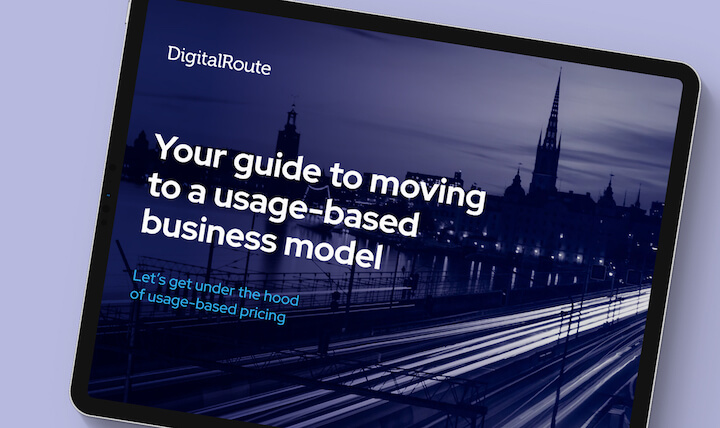Subscription Pricing
Subscription pricing is a pricing model and strategy that involves customers paying a recurring fee at regular intervals, usually on a monthly or annual basis, to gain access to a product or service.
What Is Subscription Pricing?
Subscription pricing is a pricing model where customers pay a recurring fee at regular intervals, typically monthly or annually, to access a product or service. It allows customers to subscribe to a vendor’s offerings for a specific period of time in exchange for an agreed-upon set price. This pricing model is commonly used in various industries, including Software-as-a-Service (SaaS), cloud computing, media streaming, and subscription boxes.
The subscription pricing model provides customers with ongoing value as they can continuously use the product or service over an extended period instead of making a one-time purchase. It offers several benefits, such as affordability, flexibility, and convenience for customers, as they can access the offering without the need for a large upfront investment.
For businesses, subscription pricing helps establish recurring revenue streams and promotes customer loyalty and engagement. It also allows for better forecasting and revenue predictability compared to traditional one-time sales.

What Are the Most Common Types of Subscription Pricing Models?
Flat Fee
This model offers users a single price for all features of the offering. Customers are charged the same amount each billing cycle.
Examples:
Netflix offers a flat fee subscription where customers pay a fixed amount per month to access their entire library of movies and TV shows without additional charges.
Dropbox provides a flat fee subscription plan that allows users to store and share files with a set amount of storage space.
Tiered Pricing
With tiered pricing, customers pay different prices based on the level of service or features they choose. This allows businesses to offer multiple packages at different price points to cater to the diverse needs of their customers.
Examples:
Adobe Creative Cloud offers tiered pricing plans, such as the Photography plan, Single App plan, and All Apps plan, with different levels of access to their suite of creative software.
Mailchimp offers tiered pricing options based on the number of subscribers, where customers can choose a plan that suits the size of their email list.
Per-User or Per-Seat
In this model, pricing is based on the number of users or seats within an organization. Each user or seat is charged a specific fee, making it suitable for businesses that require access for multiple individuals.
Examples:
Office 365 provides per-user pricing, charging businesses a specific fee for each user who needs access to their suite of productivity tools.
Slack offers a per-seat pricing model, where businesses are charged per user who needs to use their team collaboration platform.
Usage-Based
With usage-based or consumption-based pricing, customers are charged based on the actual usage of the product or service.
Examples:
Amazon Web Services (AWS) follows a usage-based pricing model, where customers are charged based on the actual amount of computing resources, storage, and data transfer they consume.
Twilio charges customers based on the number of messages or phone calls made through their communication platform.
Freemium
The freemium model offers basic features of a product or service for free, while charging a fee for accessing premium features. This allows customers to explore the product before deciding to upgrade to the paid version
Examples:
Spotify offers a freemium subscription model, allowing users to access their music streaming service for free with ads, while providing the option to upgrade to a paid subscription for an ad-free experience and additional features.
Canva provides a freemium model where users can access basic design features for free, but can upgrade to a paid subscription for access to premium templates and advanced design functionality.
Shared Bundles
The shared bundle model operates similarly to usage-based billing, but with the distinction that it tracks and bills data for multiple parties instead of just one.
Examples:
Family sharing plans for streaming services like Apple Music or Amazon Prime allow multiple users within a household to share the subscription and access the bundled features or content together.
Business plans offered by platforms like G Suite and Microsoft Office 365 allow multiple users within an organization to share access to productivity tools and collaborative features.
As companies mature, they tend to shift towards a hybrid approach where they provide different pricing options to give flexibility to customers, or package products or features in different ways to create upsell/cross-sell opportunities. This puts a lot of pressure on your quote-to-cash applications, that need to capture high volume and complex usage data from different sources to your billing system so that customers are invoiced accurately and on time. A usage data management platform like DigitalRoute mediates usage data so that you can automate your quote-to-cash flow and eliminate manual intervention in the billing process.
Read more about our cloud-based usage data management software.
Which Are the Applications of Subscription Pricing?
Subscription pricing has various applications across different industries. Here are some common examples:
Software-as-a-Service (SaaS)
Many software companies adopt a subscription-based pricing model for their products. Customers pay a recurring fee to access and use the software, typically on a monthly or annual basis. Examples include popular SaaS platforms like Salesforce, Microsoft Office 365, and Adobe Creative Cloud.
Media Streaming
Subscription pricing is widely used in the media streaming industry, where customers pay a monthly fee to access a library of content such as movies, TV shows, music, and podcasts. Prominent examples include Netflix, Spotify, Apple Music, and Amazon Prime Video.
Subscription Boxes
Subscription pricing is popular in the subscription box market, where customers subscribe to receive curated packages of products on a recurring basis. Examples include Birchbox, HelloFresh, and Loot Crate.
Cloud Computing
Cloud service providers often offer subscription pricing models for infrastructure resources, storage, and software tools. Customers pay based on the resources they consume, such as virtual machines, storage capacity, or data transfer.
Mobile Apps and In-App Purchases
Subscription pricing is prevalent in the mobile app industry. Developers often provide free apps (freemium) with limited features and offer subscription pricing for premium or ad-free versions. In-app purchases can also be based on a subscription model to access exclusive content or features within an app.
Publications and News
Subscription pricing has long been applied to newspapers, magazines, and online publications. Publishers offer access to content through subscriptions, allowing readers to receive regular publications.
Telecommunications
Many telecommunication companies offer subscription-based pricing for services like mobile phone plans, internet connectivity, and cable/satellite TV packages.
Health and Wellness
The health and wellness industry has started adopting subscription-based models. Examples include subscription-based fitness apps, meal planning services, and personalized health coaching.
B2B Services
In addition to B2C applications, subscription pricing is also used in the B2B space. Companies offer services such as marketing automation tools, project management platforms, and customer relationship management (CRM) software on a subscription basis.
What Are the Key Benefits of Subscription Pricing?
Higher Customer Lifetime Value (CLV)
Cultivating enduring customer relationships provides businesses with extended revenue opportunities. The adoption of a subscription pricing model enables companies to prolong customer engagement beyond the initial transaction, fostering lasting loyalty and creating a steady stream of recurring revenue through continuous access to products or services.
Lower Barrier to Entry
Subscription pricing can lower the barrier to entry for customers, making products or services more accessible. By breaking down the cost into affordable monthly payments, customers may find it easier to try out new products or services, which can lead to increased adoption rates.
Cross-Selling and Upselling Opportunities
With a continuous relationship with customers, companies can introduce additional products or higher-tier subscription plans, increasing revenue potential. This can also lead to diversification, expansion, and innovation within the company’s offerings.
Lower Customer Acquisition Costs
With a focus on long-term customer relationships, businesses can reduce their marketing and sales expenses by retaining existing customers, rather than constantly acquiring new ones.
Continuous Revenue Stream
Instead of relying solely on one-time purchases, companies generate recurring revenue on a regular basis, which can lead to more stability and better financial planning.
Data and Insights
Through subscription data, companies can analyze customer behavior, preferences, and usage patterns, enabling them to personalize offerings, tailor marketing efforts, and make data-driven business decisions.
Predictable Cash Flow
Subscription pricing can help with financial planning, budgeting, and managing ongoing expenses, as there is a consistent revenue stream coming in on a regular basis.
Continuous Product Improvement
With subscription pricing, businesses receive ongoing feedback from customers, which can be used to drive product improvements and updates. The direct and continuous relationship with customers allows companies to understand their needs and make timely enhancements to their offerings.
Improved Customer Retention
With ongoing access to products or services, customers are more likely to continue using and renewing their subscriptions, reducing churn rates and increasing customer loyalty.
Faster Time-to-Value
With subscription pricing models, customers can start using products or services immediately, without the need for a significant upfront investment. This faster time-to-value can attract customers who prioritize quick access and implementation, benefiting both businesses and customers.
Scalability and Growth Potential
As the customer base expands, revenue increases proportionally, offering opportunities for businesses to scale their operations, invest in innovation, and expand into new markets.
What Are the Challenges and Limitations of Subscription Pricing?
Pricing Complexity
Developing a subscription pricing structure that accurately reflects the value offered and meets the diverse needs of customers can be complex. Finding the right balance between pricing tiers, features, and value propositions requires careful consideration. Businesses need to conduct market research, analyze customer usage data, and adapt pricing strategies based on feedback and market dynamics.
Difficulty in Managing Different Service/Billing Types
Businesses offering subscriptions may need to manage multiple service or product offerings, each with its own billing cycle, pricing structure, and customer segment. This complexity can introduce challenges in terms of operational efficiency and customer support.
What Are the Current Trends in Subscription Pricing?
Data-Driven Approach
Subscription businesses are becoming more data-driven, leveraging customer insights and analytics to optimize pricing strategies, personalize offers, and improve customer retention.
Increased Subscription Variety
The subscription model is expanding beyond traditional industries like media and software. There is a growing trend of subscriptions in various sectors, including retail, health, airlines, fitness, and even restaurants and car washes.
Flexible Pricing Tiers and Models
Subscription businesses are offering a range of pricing tiers and models to cater to different customer segments and needs. This includes options like tiered pricing with different feature levels, family plans, and usage-based pricing.
Conclusion
Subscription pricing is a model where customers pay a recurring fee, often monthly or annually, for continuous access to a product or service. Widely adopted in industries like SaaS, media streaming, and cloud computing, it offers benefits such as affordability, flexibility, and customer engagement. Common models include flat fee, tiered pricing, per-user, usage-based, freemium, and shared bundles. Applications span software, media streaming, subscription boxes, cloud computing, mobile apps, publications, telecommunications, health, and B2B services.
Key benefits include higher customer lifetime value, lower entry barriers, cross-selling opportunities, and a continuous revenue stream. Challenges include pricing complexity and managing different service/billing types. Current trends involve a data-driven approach, increased subscription variety across sectors, and flexible pricing tiers and models.
Related Terms
People also ask
Which subscription pricing model is best for your business?
Choose the best subscription pricing model for your business based on industry, target market, and goals. While usage-based pricing is flexible and fair, it can be complex to manage. Consider various factors when making the decision.
What is the difference between subscription pricing and auto-renewals?
Subscription pricing is the recurring fee customers pay for access to a product or service, while auto-renewals is a feature that automatically renews subscriptions, ensuring uninterrupted access.



